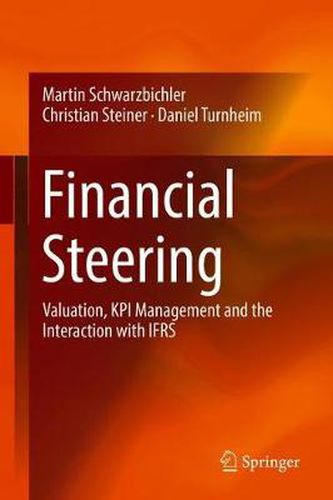Readings Newsletter
Become a Readings Member to make your shopping experience even easier.
Sign in or sign up for free!
You’re not far away from qualifying for FREE standard shipping within Australia
You’ve qualified for FREE standard shipping within Australia
The cart is loading…






This title is printed to order. This book may have been self-published. If so, we cannot guarantee the quality of the content. In the main most books will have gone through the editing process however some may not. We therefore suggest that you be aware of this before ordering this book. If in doubt check either the author or publisher’s details as we are unable to accept any returns unless they are faulty. Please contact us if you have any questions.
This book is a guide to how financial steering is designed, measured and implemented with a special focus on the energy industry. The authors offer an overview of and practical insights into the links between financial steering and accounting, and the temporary cycles of investment, divestment, return and loss, market highs and lows that form the framework of the entire energy industry across all value chain stages. The faster and the larger the cash cycles of investments and their returns, the greater not only the value created, but also the potential loss if the financial steering is not properly designed and managed. Value and value generation require an understanding of how value is both defined and measured in both and how the business/project economics model of a company works - financial steering provides this. Further, the book also discusses accounting topics such as impairments, new IFRS standards and the impact of accounting on key performance indicators of financial steering, which are associated with these investment decision valuations. The combination of accounting with the cash flow perspective provides a complete understanding of selected practical topics of financial steering which are explained in detail in a large number of examples and case studies.
The book is intended for a wide range of finance/controlling/treasury/accounting professionals and students. It is written in practical and simple terms to outline the financial steering concept and to bring it to life in daily work and in the decision making process for financial steering. All illustrated concepts are in the same manner relevant and applicable to all other asset-intense industry sectors and their financial steering processes.
$9.00 standard shipping within Australia
FREE standard shipping within Australia for orders over $100.00
Express & International shipping calculated at checkout
This title is printed to order. This book may have been self-published. If so, we cannot guarantee the quality of the content. In the main most books will have gone through the editing process however some may not. We therefore suggest that you be aware of this before ordering this book. If in doubt check either the author or publisher’s details as we are unable to accept any returns unless they are faulty. Please contact us if you have any questions.
This book is a guide to how financial steering is designed, measured and implemented with a special focus on the energy industry. The authors offer an overview of and practical insights into the links between financial steering and accounting, and the temporary cycles of investment, divestment, return and loss, market highs and lows that form the framework of the entire energy industry across all value chain stages. The faster and the larger the cash cycles of investments and their returns, the greater not only the value created, but also the potential loss if the financial steering is not properly designed and managed. Value and value generation require an understanding of how value is both defined and measured in both and how the business/project economics model of a company works - financial steering provides this. Further, the book also discusses accounting topics such as impairments, new IFRS standards and the impact of accounting on key performance indicators of financial steering, which are associated with these investment decision valuations. The combination of accounting with the cash flow perspective provides a complete understanding of selected practical topics of financial steering which are explained in detail in a large number of examples and case studies.
The book is intended for a wide range of finance/controlling/treasury/accounting professionals and students. It is written in practical and simple terms to outline the financial steering concept and to bring it to life in daily work and in the decision making process for financial steering. All illustrated concepts are in the same manner relevant and applicable to all other asset-intense industry sectors and their financial steering processes.